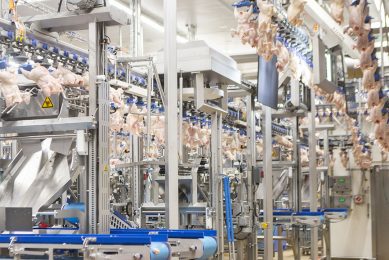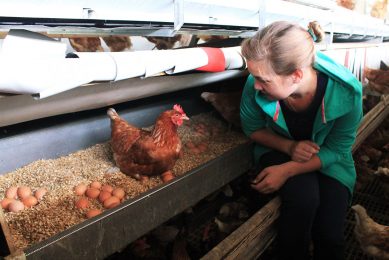Sanderson Farms results for Q4
Sanderson Farms has reported results for the fourth quarter and fiscal year ended October 31, 2009.
Net sales for the fourth quarter of fiscal 2009 were $469.0 mln compared with $460.2 mln for the same period a year ago. For the quarter, the company reported net income of $19.8 mln compared with a net loss of $51.9 mln for the fourth quarter of fiscal 2008.
The results for the fourth quarter of fiscal 2008 included an adjustment to record inventory values at the lower of cost or market of $29.7 mln, net of the income tax benefit, and unreimbursed expenses associated with Hurricanes Gustav and Ike of $736,000, net of the income tax benefit. Excluding these adjustments, the net loss for the fourth quarter of fiscal 2008 was $21.5 mln.
Net sales for fiscal 2009 were $1.789 bln compared with $1.724 bln for fiscal 2008. Net income for the year totaled $82.3 mln, compared with a net loss of $43.1 mln for last year. The results for fiscal 2008 include both adjustments described above, as well as a net charge of $1.7 mln taken during the third fiscal quarter, related to the settlement of certain donning and doffing litigation. Excluding these adjustments, the net loss for fiscal 2008 was $11.0 mln.
“Fiscal 2009 was a successful year for Sanderson Farms with a solid performance in our fourth quarter,” said Joe F. Sanderson, Jr., chairman and CEO of Sanderson Farms. “Sales for the year were a record $1.789 bln, up 3.8% over fiscal 2008, reflecting the growth in our Waco facility, offset by our production cuts earlier in the year. While the overall chicken market improved during our fourth fiscal quarter compared with the same period a year ago, market conditions were less favorable than the third quarter of this fiscal year. However, we continued to benefit from lower grain prices, with improved profitability over the prior year.”
According to Sanderson, market prices for poultry products were mixed in the fourth quarter of fiscal 2009 compared with prices a year ago. As measured by a simple average of the Georgia dock price for whole chickens, prices were lower by approx. 3.8% in the company’s fourth fiscal quarter compared with the same period in fiscal 2008, and were higher by 4% for the fiscal year compared with the prior year. Boneless breast meat prices during the quarter averaged 6.5% higher than the prior-year period, and averaged over 1% lower for fiscal 2009 compared with the prior year.
Jumbo wing prices averaged $1.32 per pound during the fiscal year, up 40.7% from the average of $0.94 per pound for fiscal 2008. The average market price for bulk leg quarters decreased approx. 29.2% for the quarter and 19.2% for fiscal 2009 when compared with the same periods last year.
The drop in leg quarter prices during the quarter reflects the impact of lower overall export demand. Prices for corn and soybean meal, the company’s primary feed ingredients, decreased 35.2% and increased 4.2%, respectively, compared with the fourth quarter a year ago. For the year, total feed costs were 10% lower than fiscal 2008.
“We are pleased to have our new Kinston, North Carolina, poultry complex back on track and the construction of a new feed mill, poultry processing plant and hatchery is moving forward on schedule,” Sanderson continued. “We expect to place our first live pullets in North Carolina in April 2010, and look forward to beginning operations there in January 2011.
“Our success during fiscal 2009 also allowed us to strengthen our financial position and reduce our debt. As of October 31, 2009, our balance sheet reflected $636.2 mln in assets, stockholders’ equity of $430.7 mln and net working capital of $162.7 mln. Our total long-term debt at year-end was $103.1 mln. We believe a strong balance sheet is a critical advantage in a cyclical business and provides us with the financial strength to support our growth strategy and capitalize on the opportunities ahead.
“As we move forward to fiscal 2010, current market conditions reflect ongoing weakness in consumer spending and slow restaurant traffic. While retail grocery trends remain favorable, meaningful improvement in demand for chicken from food service customers will not likely occur until the national employment situation improves and consumers start dining out again. However, we believe the industry, through earlier production cuts now being reflected in reduced egg sets and pullet placements, is well positioned to benefit from and respond to any market improvement.”
Sanderson concluded, “We are pleased with our results for fiscal 2009 and are optimistic about the year ahead.”
 Beheer
Beheer








 WP Admin
WP Admin  Bewerk bericht
Bewerk bericht